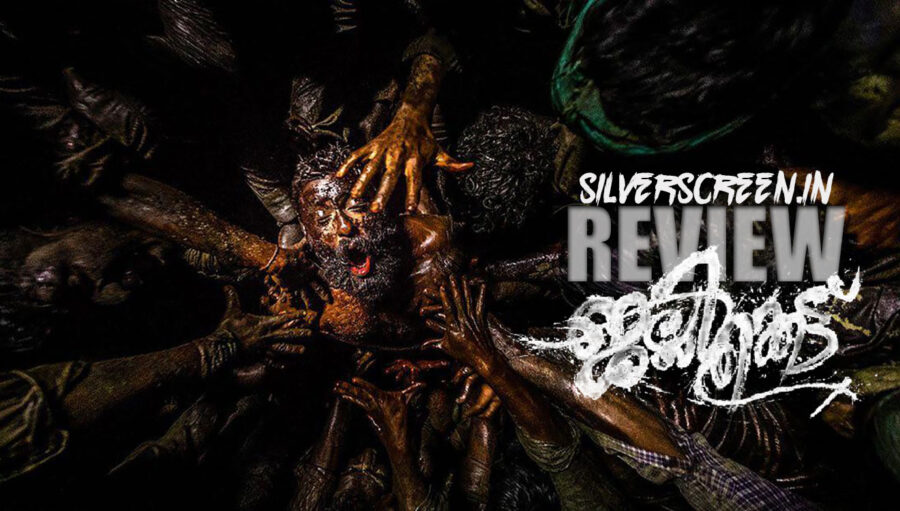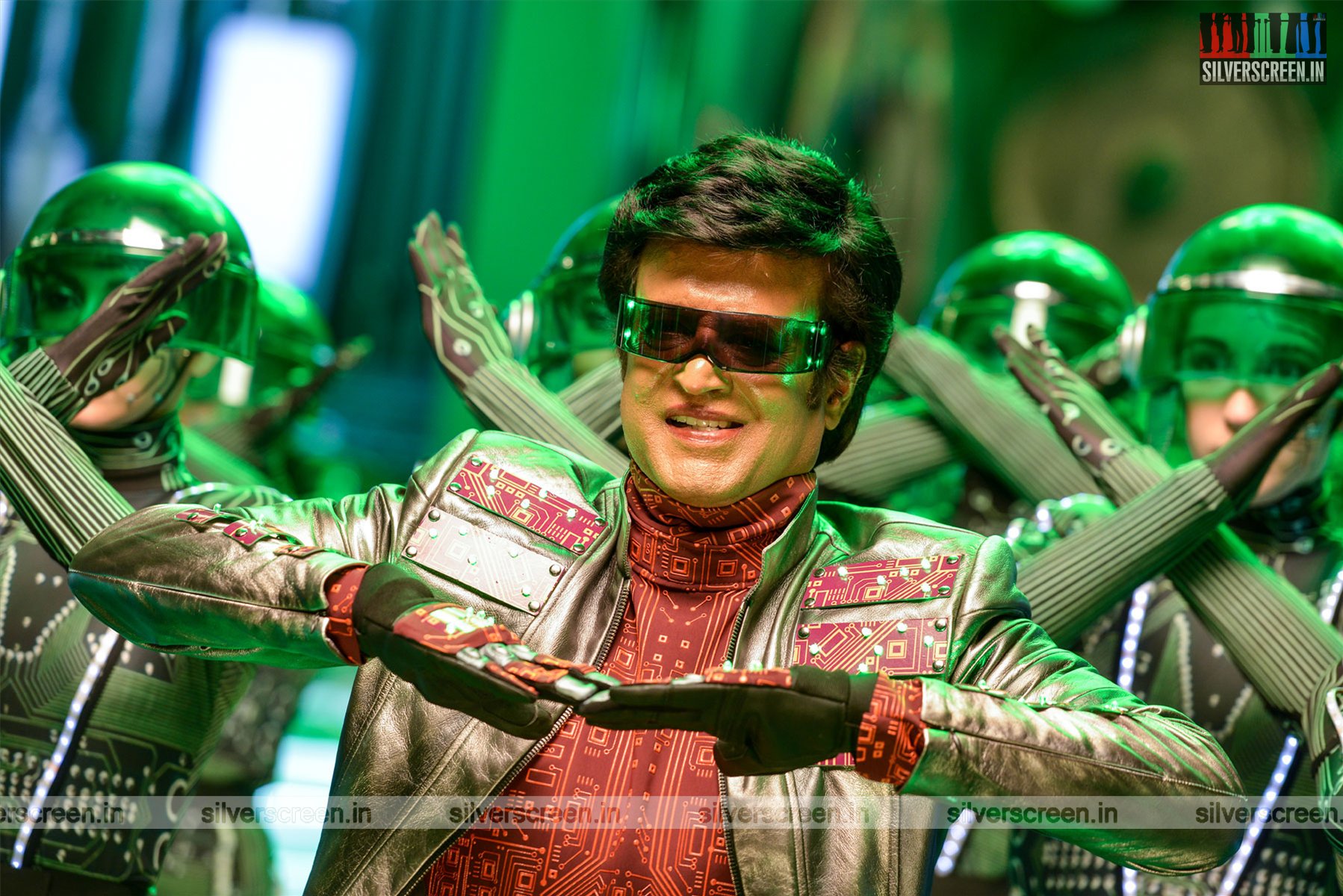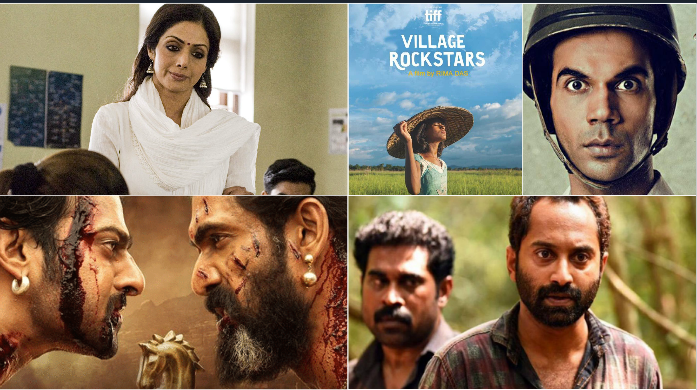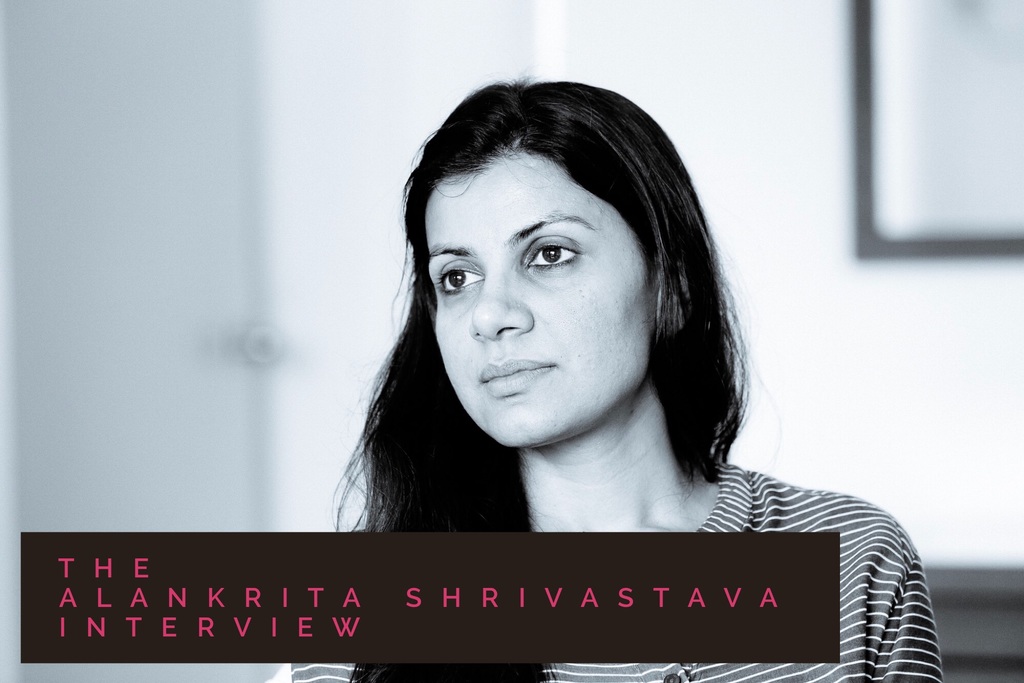Lijo Jose Pellissery knows how to craft a prologue; he has many tricks up his sleeve. His last film Ee Ma Yau was about a family’s deathly effort to organise a funeral and the opening credits passed over a wide-angle shot of a funeral procession, that instantly acted as a pointer for what the rest of the film was about. Ee Ma Yau was written by PF Mathews. For his new film Jallikattu, Lijo’s worked with another Malayalam writer – S Hareesh. The film is based on Hareesh’s story Maoist, and here, Lijo crafts a series of quickly cut vignettes to familiarise us with the myriad characters, named and unnamed. These are quick, staccato shots and the series sets the pace of the film. We get a day in the life of these people – Varkey (Chemban Vinod Jose) the butcher – his daytime job among flesh, and his night time secret forays into homes for flesh of another kind, his apprentice Anthony (Antony Varghese), Varkey’s sister Sophie (Santhy Balachandran), an abusive police inspector and his violently frustrated wife, a man whose daughter is getting engaged, a pacifist Catholic who likes to go by the book, Kuttachan, a local hero with personal grudges and a history of enmity with Anthony. We learn everything by fast-forwarding through a single day in the lives of these people – the daily squabbles, friendships, love stories, gossip of the town. If you want to eschew exposition, this is how you do it. The names don’t matter. The men and their faces do, and that’s what Lijo gives us in this disorienting opening.
Disorientation. That’s another feeling Lijo is going for with Jallikattu. The film has nothing to do with Tamil Nadu’s tradition of jallikattu except that here a buffalo about to be butchered by Varkey and Anthony escapes their grip and runs amok. From then on, Lijo has us in his grips till the final shot. The film is so intense and visceral by design that it is a squirm-in-your-seat experience. Lijo wants us to shift around in our seat and we do. It’s a remarkable marriage of shot composition (Girish Gangadharan behind the camera), chaos choreography, sound design (Renganaath Ravee) and score (Prashant Pillai). If the visuals don’t get us, the sound will. We are used to rain-soaked greens of beautiful Kerala but Jallikattu is going for the ugliness of humankind and in darkness, the greens of dense, otherwise beautiful forests get overwhelmed by bodies of snarling men with weapons and torches. It is a visual and aural adventure that is stomach-churning at times.
The obvious angle here is man vs beast. But dig deeper and there are more cues. It is S Hareesh’s (his story Meesha’s serialisation was withdrawn after protests by Hindu organisations and there was even a plea for a ban on it) story after all; the film hints at the kind of hate campaign that is prevalent in India currently. The ‘buffalo’ becomes a metaphor. Its life, its meat, and its very existence. Men claim ownership over the beast for various things – both for its utility and for the right to take its life. It’s about who will bell the beast and the shot is literally realised.
Bad blood of the past comes to the fore. It has its roots in different kinds of ownership – over women, over families, over parties and religion. There are different gangs – a Poomalam gang, the gang consisting of communist party workers – they all have a singular mission against the animal, but it manifests in different forms for different purposes. At one point, the beast enters a bank and wreaks havoc. A clerk is trapped with a customer – who is after the buffalo – inside a cabin and he pleads with her to write off his debt. It’s tempting to think of a demonetisation angle here. Not to mention an offhand shot of news on TV mentioning a Supreme Court order – I couldn’t catch what the matter was about – was it Sabarimala?
It is no surprise that with a title like Jallikattu, the film underlines masculine energy. Maybe energy is not the word. It is toxicity. It is even parodied. Kuttachan’s fans and friends give him an onomatopoeic background score when he is walking ahead. One can talk about the need for another film that lays bare the hideousness of men. The film is sure to provoke argument and discourse in that regard. Kuttachan and Anthony begin a long, extended brawl that goes on for too long. It almost becomes unbearable to watch. Women are present but also incidental and are clearly shown to be the intelligent-but-oppressed group. Santhy Balachandran as Sophie appears only in a few scenes and large part of her lines, expressions, involve rejecting the advances and physical abuse of other men. But she is also shown as capable of manipulating these men, her stone-cold face saying a million things in close-up.
Recommended
Jallikattu is clearly a more experimental venture from Lijo. The film’s grammar is in tune with his past films, but we can also see that he is trying different things in parts, and also showing off. At times the man vs beast angle is deliberated upon so much that I wanted to scream, “Yes, we get it!” But the film is also more than that. It’s ironic to call it a visual treat. Jallikattu is a more turbulent experience but that’s cinema for you, all the better for it. It takes all kinds.
Image courtesy: TIFF
This Jallikattu review is a Silverscreen original article. It was not paid for or commissioned by anyone associated with the film. Silverscreen.in and its writers do not have any commercial relationship with movies that are reviewed on the site.



